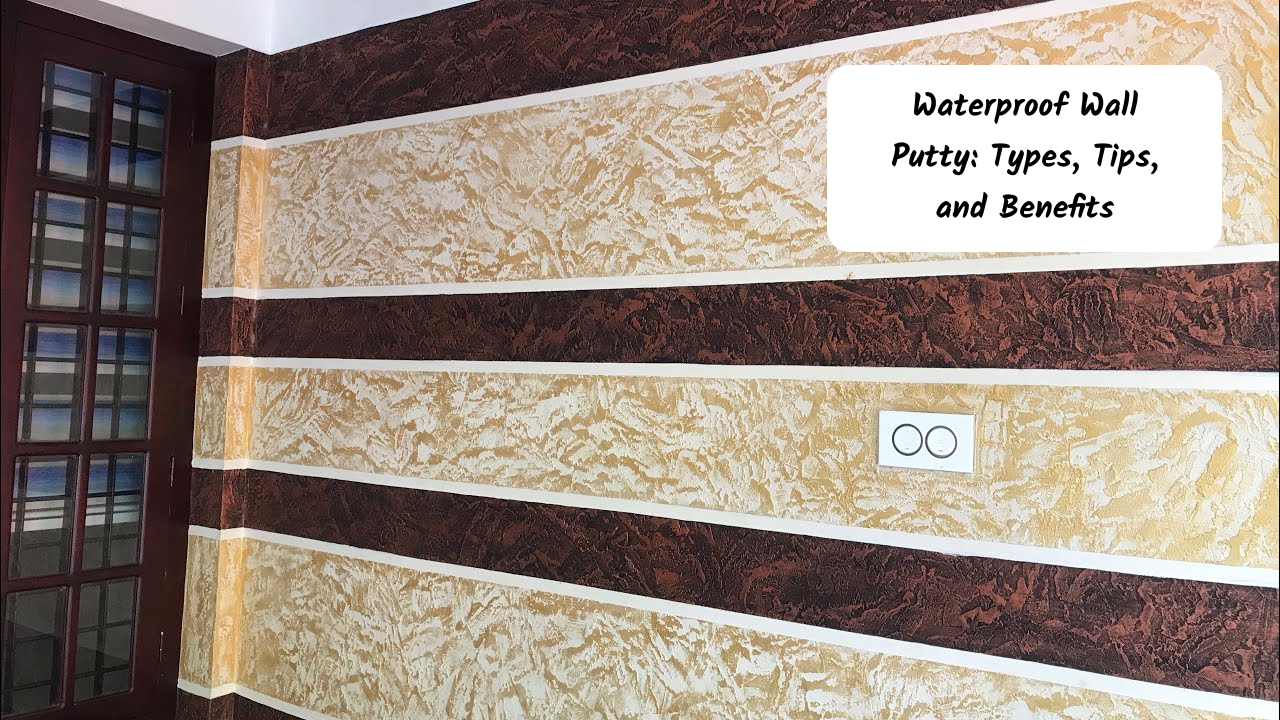
As per research, the global wall putty market will grow by $1.33 billion by 2026, making it one of the most preferred products. The main reason for this compelling speculation is because of its growing demand by end-users for constructing or repurposing a residential or commercial structure. User behavior towards wall putty is influenced by its distinct features, which enable them to create sustainable structures.
To have benefits wall putty offers, one must know how to apply them appropriately. For example, wall putty is available in different ranges for external and internal applications. In this blog, we will discuss various aspects of waterproof wall putty.
Waterproof Wall Putty – Introductory Remarks
The most common application of wall putty is its thin coating before painting. This cement-based powder gets ready for application after its conglomeration with water. The application provides a smoother finish to the wall and keeps it protected from seepage and moisture trouble. With the same, walls receive water & heat resistance, abrasion resistance, and resistance against flaking.
One can use a waterproof putty to fill up the cracks, pinholes, and undulations in the walls and make the surface aesthetically appealing. This versatile material is suitable for concrete, brick, plaster, and drywall. Distinct wall putty can be used for internal and external applications, and one needs to make a sensible choice in selecting the appropriate wall putty, depending on the expectations, and regular wear and tear surface needs to tolerate. The wide range of functionality overshadows the waterproof wall putty price.
Different Types of Wall Putty
The following are the two most common variants of putty used by the end user:-
Acrylic Wall Putty: It is waterproof wall putty for interior walls and provides a durable smoothness and matte to the walls. It is made of white pigments, acrylic emulsion, and additives.
White Cement Wall Putty: This wall putty serves the finishing of both external and internal surfaces. The application of this popular wall putty provides a smoother and glossy finish to the walls. Its application also increases the gluing strength, making the surfaces more durable.
Guide to Using Wall Putty
Here are the practices that provide the best results from the use of wall putty:-
Creating a Base: Before applying wall putty, the surface must be unburdened from traces of dust, oil paints, old wallpaper, grease, and stains. It creates a foundation for the proper application of the product. This also includes the removal of fungi and algae from the wall using a wire brush.
Filling Up the Uneven Sections: Using the wall putty to make the surface even requires checking with dents, holes, and cracks.
Creating Proper Mixture: The 2:1 ratio of water and wall putty enables the user to create an appropriate mixture required to make the surfaces even. The mixture needs to be applied within 2 hours as it starts getting stiff, making it difficult for the user to use.
Premier Coating: Premier coating wall putty provides better adhesion to the paint and contributes to the durability of the appearance.
Use Towel Blade: Using a towel blade enables the user to apply the putty on the entire surface consistently.
Ready for Application: Post application of putty on the surface, it takes 16-20 hours to get dry and become prepared for the next application.
Advantages of Using Wall Putty in a Structure
The following are the benefits of using water-resistant putty that make it a desirable product:-
Environmental Friendly Products: A water-resistant wall putty is a sustainable product that does not cause harm to the environment or the person living under the surface of walls created using wall putty. The same develops a sense of safety and allows the person to live without additional trouble while contributing to a sustainable future.
Resistance Against Corrosion: The application of putty prevents moisture and water from causing slippage and damaging internal components of the wall.
Ease in Application: The acrylic wall putty comes in ready-to-use form, while the white cement-based wall putty can be prepared for application by adding and mixing appropriate proportions of water.
Affordable Price: The consumer-oriented price of wall putty makes it a better product for improving the quality of wall surfaces.
Also Know: How to Clean and Maintain Your Tile Grout to Keep It Looking New?
Concluding Remarks
Wall putty enables the user to provide the surfaces with a coating that provides smoothness to the walls and keeps them protected from several external factors. Using a wall putty with the most appropriate method allows users to get the best possible results. If you are looking to buy a water-resistant wall putty, you must choose Trimurti for the best products at an affordable price.





